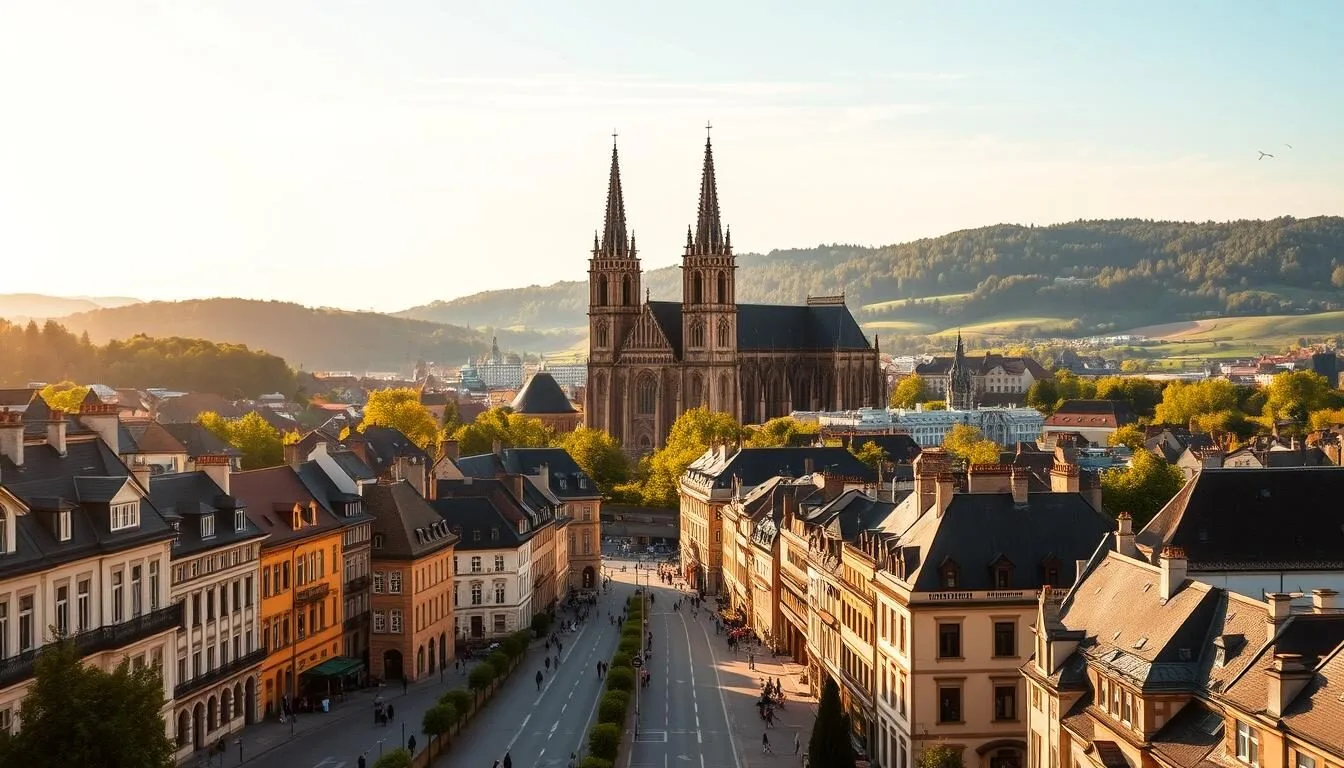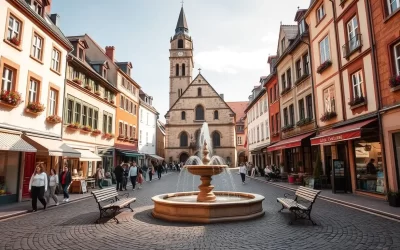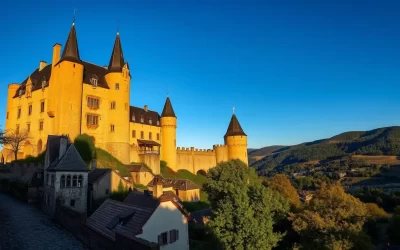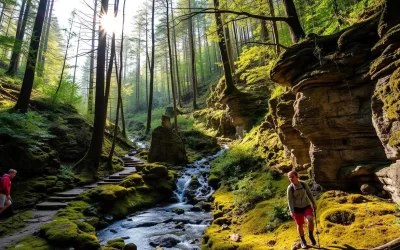Nestled between France, Germany, and Belgium, Luxembourg is a hidden gem waiting to be explored. Despite its small size, this landlocked country packs a punch when it comes to attractions and experiences. You might be surprised to learn that Luxembourg City, the capital, is not just a hub for bureaucrats and bankers, but also a treasure trove of history, culture, and natural beauty.
As you wander through the city’s strollable streets, you’ll discover a charming blend of historic landmarks, intriguing museums, and breathtaking vistas. Whether you’re planning a quick trip or a longer stay, Luxembourg has something for everyone. From UNESCO-listed sites to hidden gems off the beaten path, this guide will help you make the most of your travel experience.
Discovering Luxembourg’s Charm
With its unique blend of cultures and landscapes, Luxembourg is a destination that will captivate you. As you explore this beautiful country, you’ll find that it’s a place where time seems to stand still, allowing you to appreciate the beauty around you. Luxembourg City, the capital, is a perfect starting point, offering a mix of ancient fortifications and modern institutions that showcase the best of this European gem.
A Small Country with Big Attractions
Luxembourg is a tiny country that is thinly populated and predominantly rural, making it an ideal destination for couples and families alike. Despite being one of the smallest countries in the world, Luxembourg offers an impressive array of attractions that rival those of much larger nations.
| Aspect | Description |
|---|---|
| Cultural Blend | The country’s unique position at the crossroads of Germanic and Latin cultures has created a distinctive blend visible in its architecture, cuisine, and traditions. |
| Urban vs. Rural | Luxembourg offers a perfect balance of urban sophistication and rural charm, making it possible to experience both in a single day. |
| Pace of Life | Time seems to move at a different pace here, allowing visitors to slow down and appreciate the beauty and history. |
You’ll discover that Luxembourg is a utopian destination where your children are safe and catered to with many activities. The country’s compact size and rich history make it an ideal place to explore, with Luxembourg City serving as the perfect starting point.
Explore Luxembourg City’s Historic Center
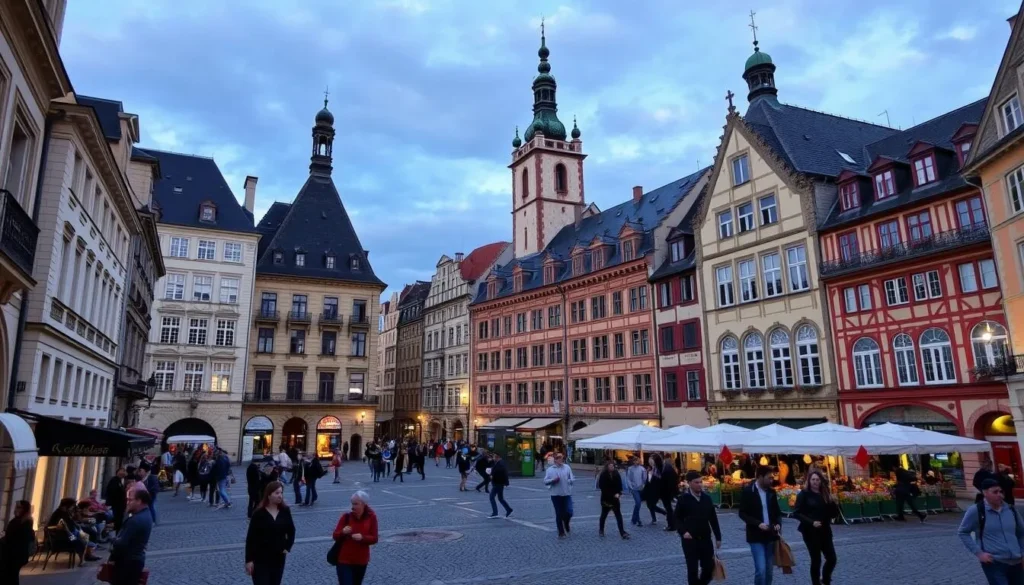
With its rich history and stunning architecture, Luxembourg City’s Historic Center is a fascinating place to explore. As a UNESCO World Heritage site, it boasts a unique blend of medieval fortifications, picturesque streets, and elegant 18th-century buildings.
The UNESCO-Listed Old Town
The Old Town, also known as the Haute Ville, is a layered complex of bastion walls, viewpoints, and footpaths that wind through parks and the remains of medieval fortresses. It’s perched dramatically above the Alzette and Pétrusse rivers, offering breathtaking views. As you walk through the cobblestone streets, you’ll be transported through centuries of history, with buildings from the medieval period standing alongside elegant structures from the 18th century.
The historic center is home to several key attractions, including the Musée d’Histoire de la Ville de Luxembourg and the Cathédrale Notre-Dame. These landmarks not only showcase the city’s rich history but also highlight its cultural significance.
Place Guillaume II and Place d’Armes
At the heart of the city center lies Place Guillaume II, locally known as “Knuedler.” This vibrant square hosts a biweekly market, known as the Stater Maart, where you can sample local produce and specialties. It’s a great place to experience the local culture and cuisine.
Another central square, Place d’Armes, is lined with charming cafés and restaurants. Here, you can sit back, watch city life unfold, and enjoy Luxembourg’s unique culinary delights. The historic center is compact and easily explored on foot, making it simple to discover hidden corners and charming alleyways that reveal the city’s rich architectural heritage.
Walk Along the Chemin de la Corniche
Strolling along the Chemin de la Corniche is an unforgettable experience in Luxembourg City. This scenic walk is perched high above the Lower Town, offering breathtaking views of the Alzette Valley and the surrounding landscape.
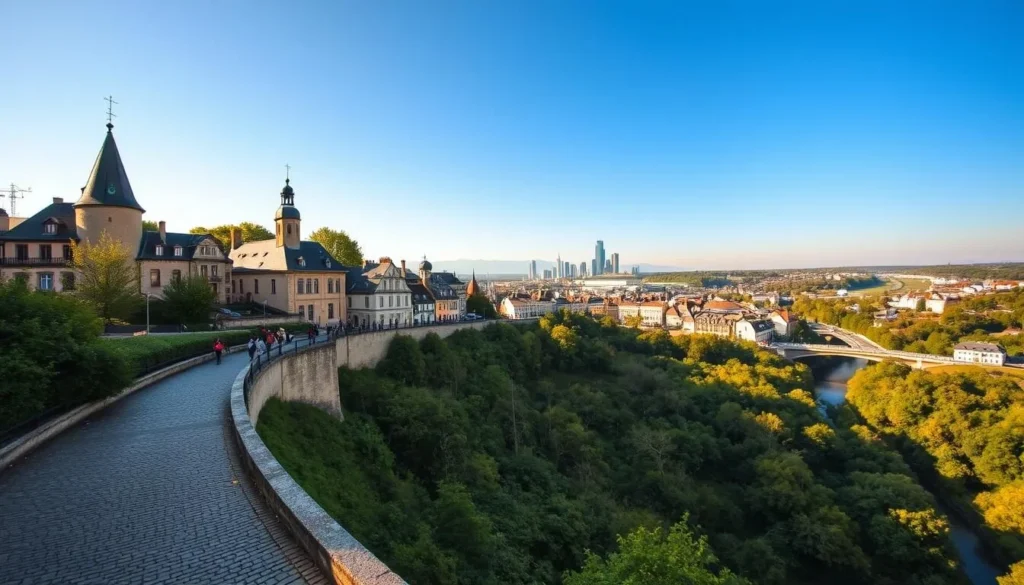
A Balcony with a View
The Chemin de la Corniche is often referred to as “Europe’s most beautiful balcony.” It follows the course of the 17th-century ramparts along the eastern edge of the city, providing a perfect vantage place to appreciate Luxembourg City’s unique topography. As you walk along this scenic path, you’ll encounter numerous photo opportunities that capture the essence of Luxembourg’s dramatic landscape.
Best Photo Spots and Viewpoints
The best time of day to experience the Chemin de la Corniche is during the golden hour before sunset, when the soft light bathes the old fortifications and the houses of the lower town in a warm glow. Take your time to explore the various viewpoints along the route, as each offers a slightly different perspective of the city’s remarkable setting between the rocky outcrops.
As you enjoy the views of Luxembourg City, remember to wander around the area, following random paths and seeing where they take you. There are a lot of stunning vantage points that are better appreciated away from the crowds, and even some benches where you can sit down and soak it all in.
Discover the Bock Casemates and Fortifications
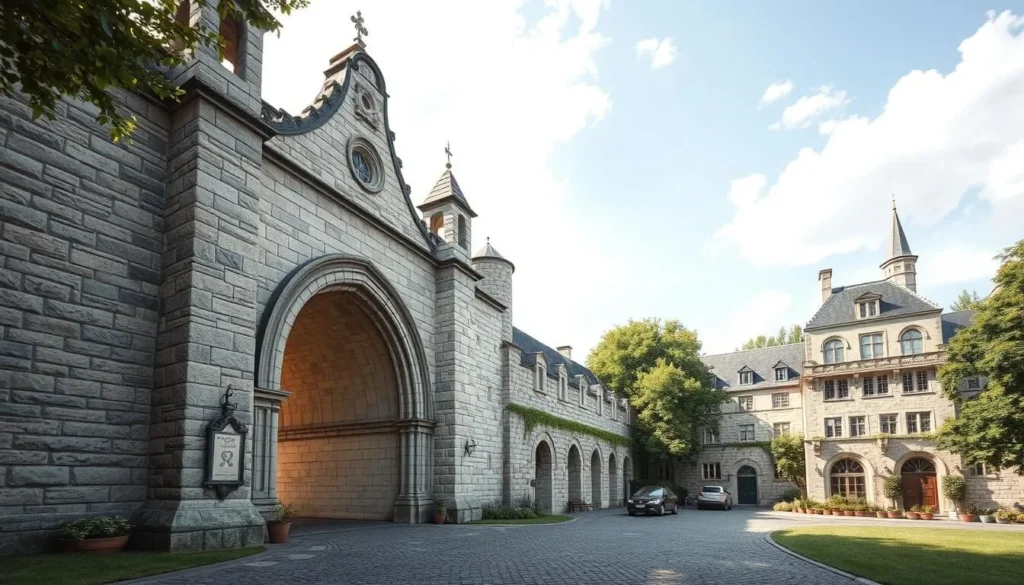
Luxembourg City’s rich history is palpable as you explore the Bock Casemates, a labyrinthine network of underground fortifications. Originally built in the 17th century, these tunnels have served various purposes over the centuries, including as a bomb shelter during WWII.
Exploring the Underground Tunnels
The Bock Casemates represent one of Luxembourg’s most fascinating historical sites, consisting of a network of underground tunnels carved into the city’s rocky promontory. As you navigate through these defensive tunnels, you’ll gain a unique glimpse into military history, passing through chambers that once housed soldiers, horses, workshops, kitchens, and even a bakery. With 17km of tunnels remaining, you’ll need to allow plenty of time to fully appreciate these engineering marvels.
The Pétrusse Casemates
In another part of the city, the Pétrusse Casemates offer a different perspective on Luxembourg’s defensive system. Accessible through guided tours, these casemates reveal their historical significance and provide insight into the city’s strategic importance. Exploring both the Bock and Pétrusse Casemates gives you a comprehensive understanding of Luxembourg’s fortifications and their role in shaping the city’s history.
Visiting the Bock Casemates is a journey through time, offering a glimpse into Luxembourg’s rich military history and the engineering prowess of its people. As you explore these underground tunnels, you’ll understand why Luxembourg City was once known as ‘The Gibraltar of the North’.
Visit the Grand Ducal Palace
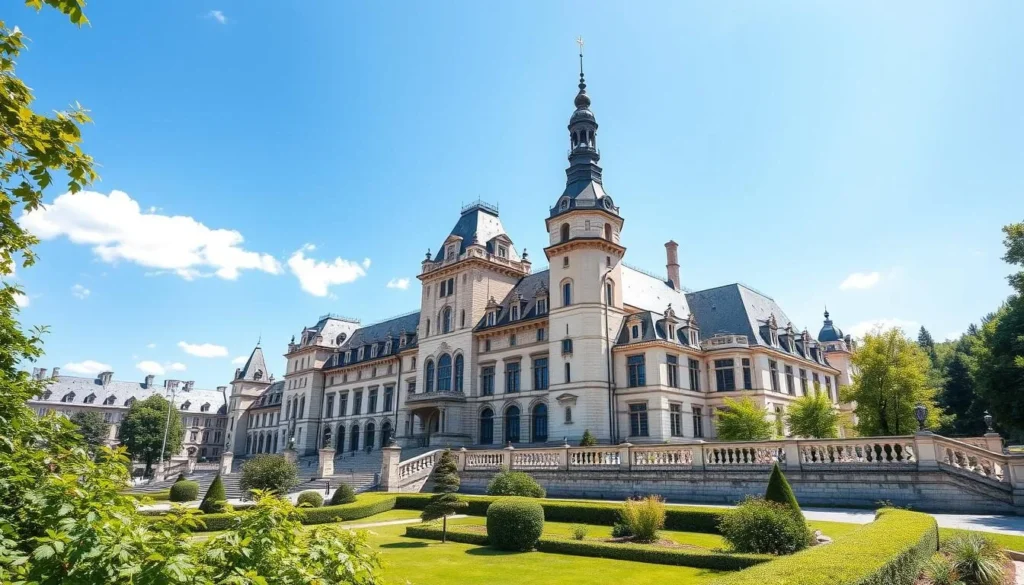
Located in the heart of Luxembourg City, the Grand Ducal Palace is a must-visit attraction that offers a glimpse into the country’s rich history and royal heritage. As the official residence of the Grand Duke, it is a significant landmark that showcases the country’s unique status as the world’s only remaining grand duchy.
Tour the Royal Residence
During the summer months (July to September), visitors can take a guided tour of the palace’s opulent interior, gaining insight into the life of Luxembourg’s royal family. The palace’s elegant façade, with its blend of Renaissance and Gothic elements, makes it one of the city’s most photographed landmarks, especially when illuminated at night.
Changing of the Guard
Don’t miss the changing of the guard ceremony, a dignified display that takes place in front of the palace, providing a perfect photo opportunity. Even if you’re not touring the inside, the palace’s central location in Luxembourg City makes it easy to include in your city exploration.
At any time, you can admire the palace’s grandeur and enjoy the nearby attractions, such as the Chocolate House café, which offers a luxurious hot chocolate.
Explore the Grund and Lower Town
Tucked away beneath the city’s historic upper town lies the tranquil Grund area, waiting to be explored. This charming district is nestled along the banks of the Alzette River and offers a serene escape from the bustling upper town’s attractions.
Scenic Walks Along the Alzette River
Take a leisurely walk along the Alzette River and appreciate the area‘s peaceful ambiance. The river cuts through the Grund, creating a picturesque scene with beautifully preserved medieval buildings. As you stroll, you’ll be treated to stunning views of the fortifications towering above.
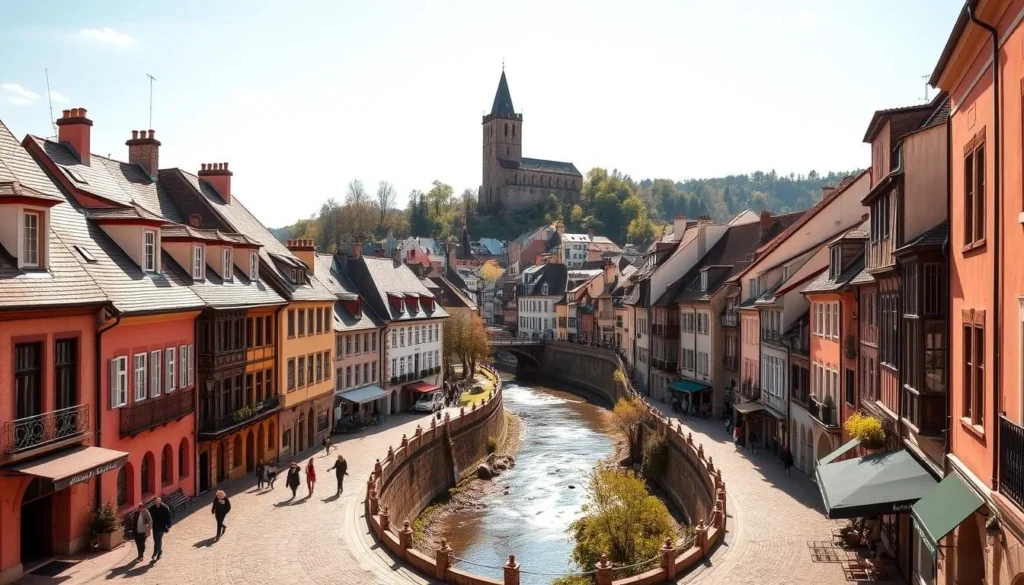
The Pfaffenthal Elevator Experience
The Pfaffenthal Elevator provides a unique experience, whisking visitors in a glass cabin between the upper and lower parts of the city. As you ascend or descend, you’ll enjoy spectacular views of the city and the valley below. For the brave, the elevator features a glass floor section, allowing you to look straight down 71 meters.
| Attraction | Location | Features |
|---|---|---|
| Pfaffenthal Elevator | Lower town | Glass cabin, panoramic views |
| Alzette River | Grund district | Scenic walks, medieval buildings |
Experience Luxembourg’s Museum Scene
Luxembourg’s museum scene is a treasure trove of art, history, and culture, waiting to be explored. The city is home to a diverse range of museums, each offering a unique perspective on Luxembourg’s rich heritage.
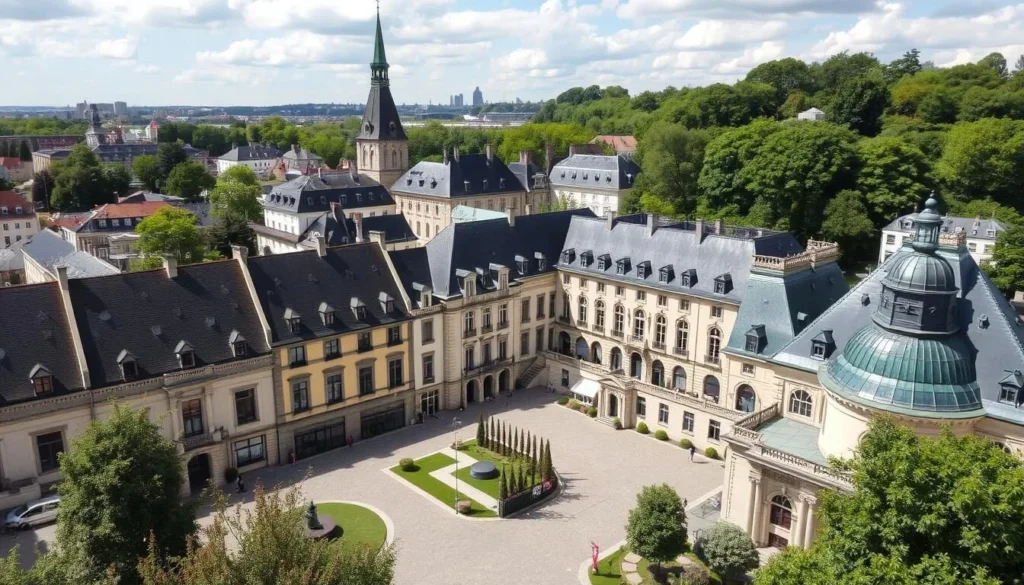
MUDAM (Museum of Modern Art)
MUDAM, designed by renowned architect I.M. Pei, is a stunning contemporary building that houses an excellent collection of modern and contemporary art in a light-filled space. The museum’s sleek, ultra-modern design is built directly into the old ramparts of town, creating a striking contrast between old and new.
National Museum of History and Art
The National Museum of History and Art (MNHA) offers a comprehensive look at Luxembourg’s rich history, from prehistoric times to the present, with particularly strong archaeological and fine arts collections. Visitors can explore the museum’s vast collections, which provide a deeper understanding of the country’s cultural heritage.
Both MUDAM and the National Museum of History and Art offer guided tours that provide deeper insights into their collections, making them excellent options for visitors interested in understanding Luxembourg’s cultural heritage. The Kirchberg district, where MUDAM is located, is worth exploring in its own right as a center for European institutions and striking modern architecture that contrasts with the historic city center.
Indulge in Luxembourg’s Food and Drink
As you explore Luxembourg, you’ll discover a rich gastronomic heritage that reflects the country’s cultural diversity. Luxembourg’s cuisine is a delightful fusion of French sophistication, German heartiness, and unique local traditions, creating a culinary experience that’s both familiar and distinctive.
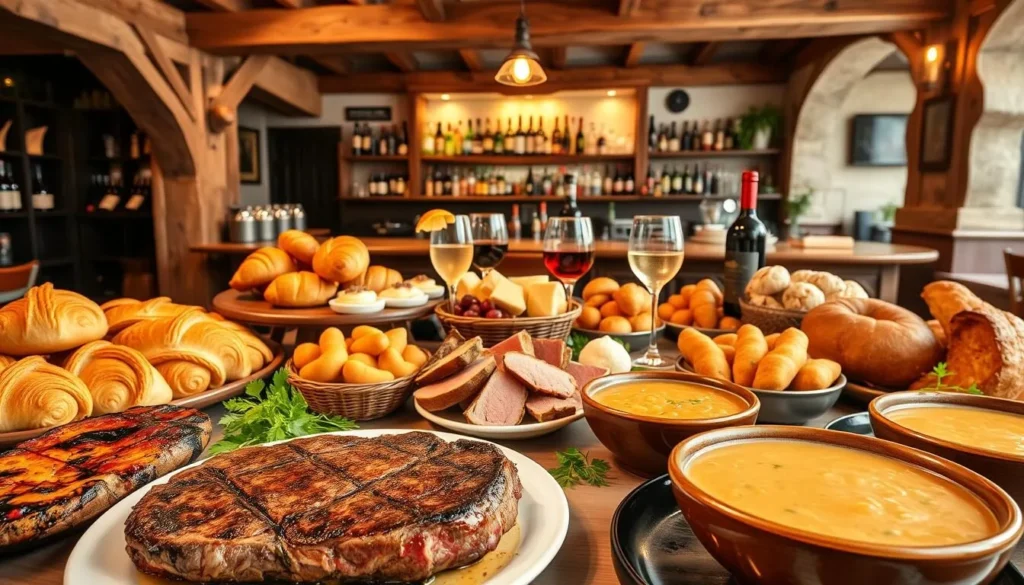
The Chocolate House and Sweet Treats
The Chocolate House by Nathalie Bonn is a Luxembourg institution, renowned for its decadent hot chocolates and exquisite pastries. Located opposite the Grand Ducal Palace, this charming shop is a must-visit destination for anyone with a sweet tooth. You can indulge in rich, handmade chocolates and an array of sweet treats that are almost too beautiful to eat.
The Chocolate House has gained international recognition, with expansions into China and Kuwait. However, the original location in Luxembourg remains the most charming, offering a delightful experience that’s quintessentially Luxembourgish. You’ll be treated to a world of sweet delights, from melt-in-your-mouth chocolates to beautifully crafted cakes.
Traditional Luxembourgish Cuisine
Luxembourgish cuisine is hearty and flavorful, featuring dishes like Judd mat Gaardebounen (smoked pork collar with broad beans) and Bouneschlupp (green bean soup). You can experience the best of traditional Luxembourgish cuisine at local restaurants throughout the country. Be sure to try Quetschentaart, a delicious plum tart that’s a staple of Luxembourgish bakeries.
Luxembourg is also home to a number of Michelin-starred restaurants, offering exceptional dining experiences that showcase the country’s culinary creativity. With more Michelin stars per capita than any other country in the world, Luxembourg is a paradise for food enthusiasts. You can enjoy local specialties like Rieslingspaschtéit and Gromperekichelcher, which highlight the country’s agricultural heritage and culinary expertise.
Taste Luxembourg’s Wine in the Moselle Valley
Luxembourg’s wine scene is a hidden gem, waiting to be discovered in the picturesque Moselle Valley. The region is particularly famous for its Crémant, a deliciously addictive sparkling wine made using the traditional method. Visitors can explore the scenic vineyards, charming wine villages, and the Moselle River, making it a perfect day trip from Luxembourg City.
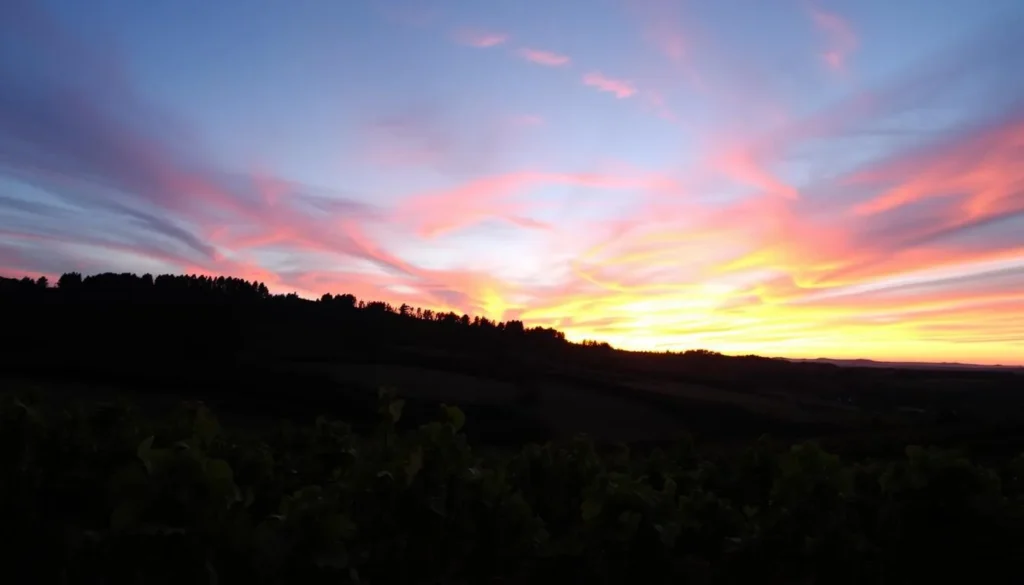
Crémant and Local Specialties
Luxembourg’s wine industry is known for producing excellent Crémant, as well as crisp white wines like Riesling, Pinot Gris, and the indigenous Elbling. The region’s unique terroir and climate contribute to the distinct flavor profiles of these wines. Visitors can sample these local specialties at various wineries along the Wine Route.
Vineyard Tours and Tastings
The Moselle Valley offers numerous vineyard tours and wine tastings, allowing visitors to experience the region’s wine production firsthand. Notable wineries include Caves St. Martin and Domaines Vinsmoselle, Luxembourg’s largest wine producer. These tours provide a unique opportunity to explore the scenic vineyards, learn about the wine-making process, and taste some of the region’s best wines.
Luxembourg: Best Things to Do Outside the Capital
Beyond Luxembourg City, the country’s natural beauty and charming towns await exploration. You can discover a different side of Luxembourg by venturing into its picturesque countryside and quaint villages.
Nature Parks and Hiking Trails
Luxembourg is home to numerous nature parks and hiking trails that offer a range of outdoor activities. You can enjoy hiking, cycling, and water sports in these beautiful areas. The country’s largest reservoir, located in the Upper Sûre Natural Park, is a popular destination for day trips and offers a variety of outdoor pursuits.
| Activity | Location | Duration |
|---|---|---|
| Hiking | Müllerthal Region | Half-day to full-day |
| Cycling | Upper Sûre Natural Park | Full-day |
| Watersports | Upper Sûre Lake | Half-day to full-day |
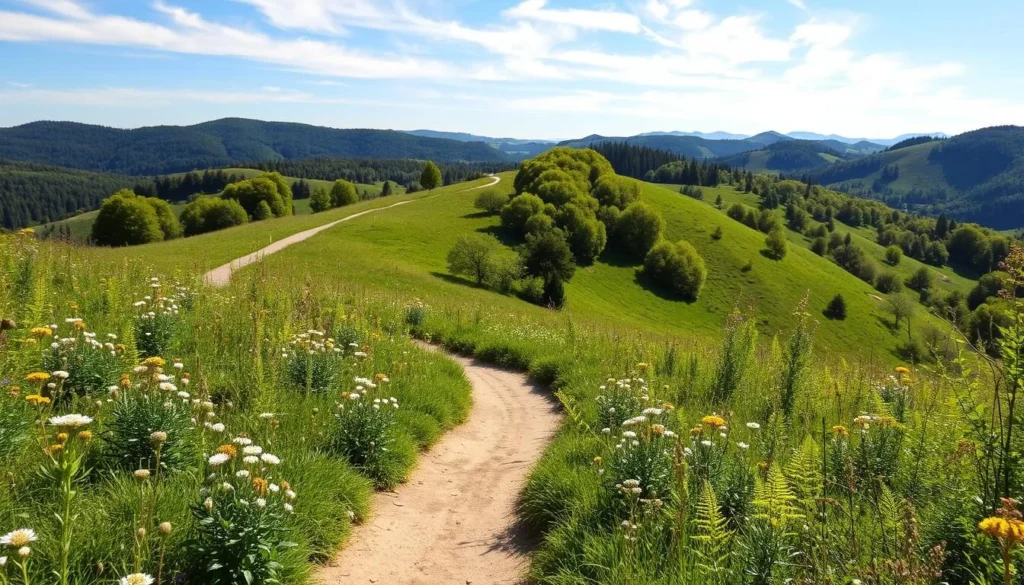
The Müllerthal Region – “Little Switzerland”
The Müllerthal Region, often referred to as “Luxembourg’s Little Switzerland,” is a must-visit destination for nature lovers and hikers. The region’s unique landscape features rocky formations, dense forests, and picturesque valleys. You can explore the area’s many hiking trails, including the E1 walking route, which takes you through some of the most breathtaking scenery in Luxembourg.
The Müllerthal Region is characterized by its lush greenery and bodies of water, making it an ideal destination for those looking to escape the city and connect with nature. With its varied landscapes and outdoor activities, this region is a great place to experience the best of Luxembourg’s countryside.
Explore Luxembourg’s Fairytale Castles
![]()
With over 70 castles, Luxembourg offers a castle-hopping experience like no other in Europe. You can explore the country’s rich history and architectural grandeur by visiting some of its most notable castles.
Vianden Castle
Vianden Castle is Luxembourg’s most famous and photogenic castle, perched dramatically on a hill overlooking the charming town of Vianden. This stunning Romanesque and Gothic architectural masterpiece has been meticulously restored to its medieval glory. You can take a guided tour through its grand halls, armory, and knights’ hall, gaining insights into the country’s feudal history. The castle’s towers and battlements offer breathtaking views of the surrounding landscape.
Beaufort and Larochette Castles
Beaufort Castle is another must-visit, comprising two adjacent castles: a medieval fortress in ruins and a 17th-century Renaissance château. This unique combination offers a fascinating contrast between different historical periods, allowing you to explore the evolution of castle architecture. Meanwhile, Larochette Castle, situated on a rocky outcrop above the town, provides spectacular views of the Ernz Blanche valley and a glimpse into Luxembourg’s feudal past.
Visiting these castles, you’ll experience the charm of Luxembourg’s towns and the richness of its history. Whether you’re a history buff or simply looking for a unique experience, Luxembourg’s castles are sure to captivate.
Visit Charming Towns Beyond the Capital
As you explore beyond Luxembourg City, you’ll discover charming towns that offer a glimpse into the country’s rich history and culture. These towns are perfect for day trips, allowing you to experience the authentic Luxembourg.
Echternach – Luxembourg’s Oldest City
Echternach, set in a bend of the River Sûre, is Luxembourg’s oldest city and a worthwhile day trip from the capital. The expansive Abbaye d’Echternach site is partly used as a school but also contains an interesting museum. You can stroll through the north arcade gateway to peek through wrought-iron gates at the splendid 18th-century Orangery, set in formal French-style gardens. The town center is home to the Dënzelt, a stone-fronted former law court dating back to the 14th century, with its current neo-Gothic appearance dating from an 1895 rebuild. Echternach is known for its well-preserved medieval center and the famous Dancing Procession, a UNESCO-recognized cultural event held annually on Whit Tuesday.
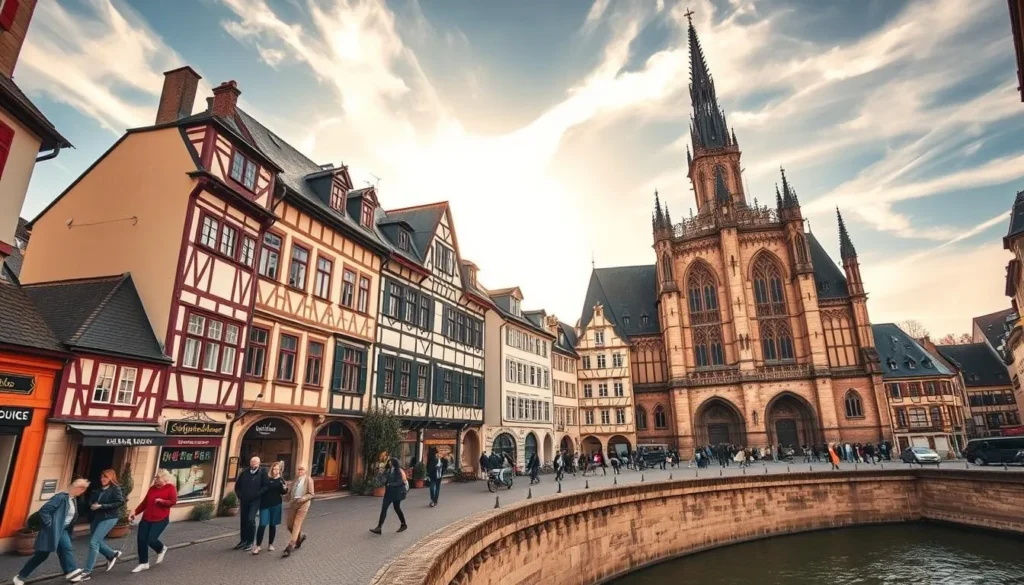
Clervaux and Wiltz
Clervaux, nestled in a deep valley in the Ardennes region, is home to a striking white castle that houses “The Family of Man,” a permanent photography exhibition created by Edward Steichen for MoMA in 1955. Wiltz, known as the “Festival City,” hosts an annual music festival and is home to a castle that played a significant role during the Battle of the Bulge in World War II, now housing a museum dedicated to this important historical event. Both towns offer unique insights into Luxembourg’s history and culture, making them ideal destinations for your day trips.
| Town | Main Attraction | Historical Significance |
|---|---|---|
| Echternach | Abbaye d’Echternach | Luxembourg’s oldest city, Dancing Procession |
| Clervaux | Clervaux Castle | “The Family of Man” photography exhibition |
| Wiltz | Wiltz Castle | Significant role in Battle of the Bulge, annual music festival |
Learn About Luxembourg’s WWII History
Luxembourg’s strategic location made it a crucial battleground during WWII, and several sites throughout the country preserve this important history. You can explore these historical sites to gain a deeper understanding of the country’s role in the war.
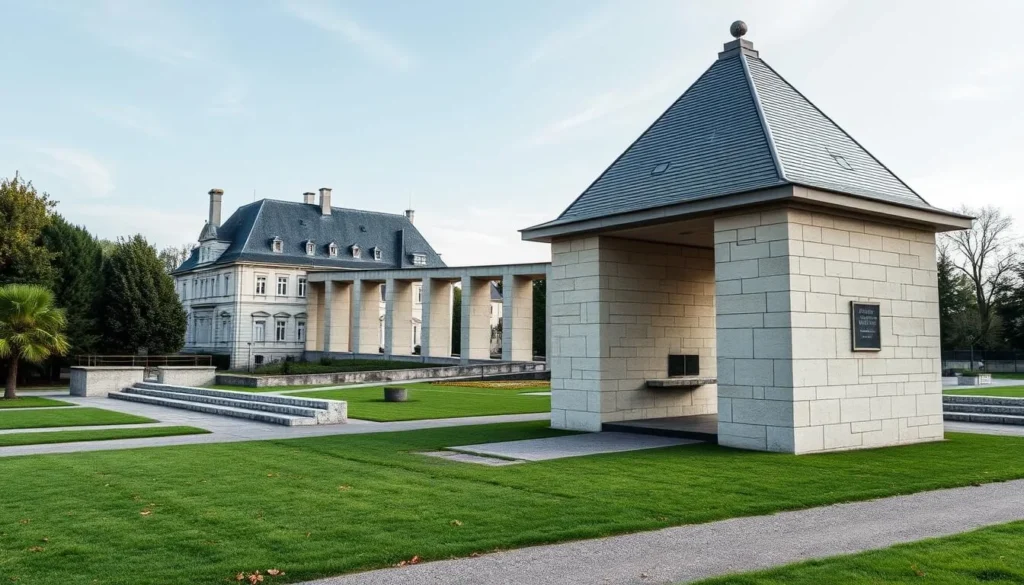
The American Cemetery at Hamm
The Luxembourg American Military Cemetery in Hamm is a solemn and moving memorial where over 5,000 American soldiers are buried, including General George S. Patton, who led the Third Army in the liberation of Luxembourg. The cemetery is a poignant reminder of the sacrifices made during WWII.
National Museum of Military History in Diekirch
The National Museum of Military History in Diekirch offers an in-depth look at Luxembourg’s WWII experience through detailed dioramas, vehicles, weapons, and personal artifacts that bring the history of the Battle of the Bulge to life. Visitors can gain a deeper understanding of the country’s history and its significance.
Image of the National Museum of Military History in Diekirch
These historical sites provide important context for understanding Luxembourg’s modern identity and its close relationship with the United States, which stems from the American role in liberating the country. A day spent exploring these WWII sites offers a profound appreciation for the sacrifices made by ordinary people during extraordinary times.
Discover Luxembourg’s Industrial Heritage in Belval
Luxembourg’s industrial past comes alive in Belval, a testament to the country’s rich history. The Belval quarter, southwest of Luxembourg City, has been transformed from a former steelworks site into a vibrant area that blends industrial heritage with modern amenities.
The Blast Furnaces and Modern Redevelopment
The gigantic blast furnaces, once the heart of Luxembourg’s steel industry, have been imaginatively revamped. You can visit the old workings inside daily, except Tuesdays, and enjoy a coffee at the ’60s-retro-styled Café Saga within Furnace B. The preserved blast furnaces are now a centerpiece, offering a glimpse into Luxembourg’s industrial past.
Cultural Events and Rockhal
Belval is not just about history; it’s also a hub for people who enjoy live music and cultural events. Rockhal, Luxembourg’s largest concert venue, attracts world-class musical acts throughout the year. During the summer months, Belval hosts various festivals that bring the industrial landscape to life, making it an exciting time to visit.
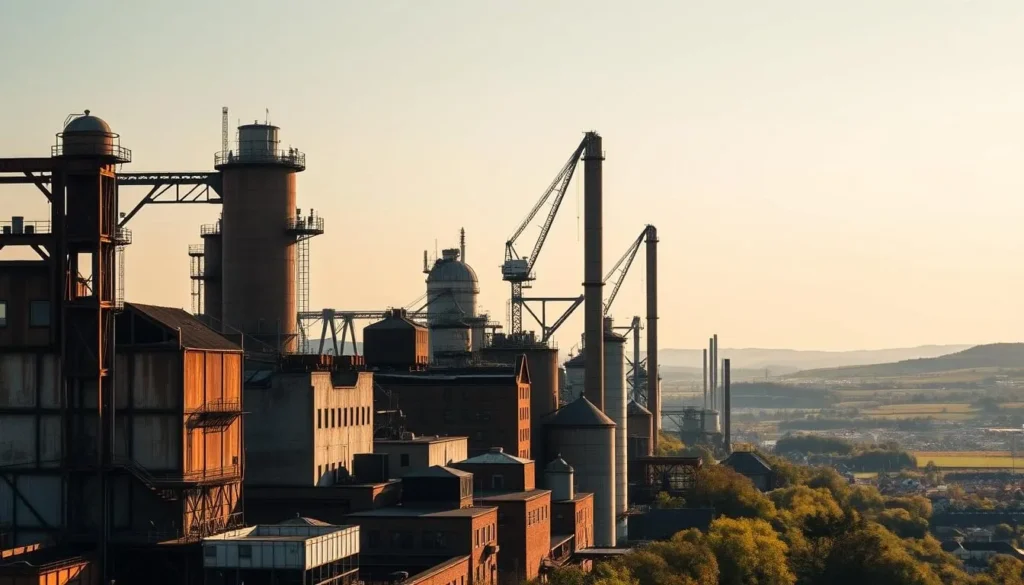
As you explore Belval, you’ll discover a unique blend of industrial heritage and contemporary design, making it a fascinating place to visit.
Seasonal Events and Festivals in Luxembourg
From winter wonderlands to summer street parties, Luxembourg’s calendar is filled with exciting events and festivals. You can experience the country’s rich cultural heritage and traditions through its various seasonal celebrations.
Christmas Markets and Winter Activities
During the winter months, Luxembourg City transforms into a festive wonderland. The city’s main squares, such as Place d’Armes, Place de la Constitution, and Place de Paris, are taken over by magical Christmas markets. You can enjoy local crafts, seasonal treats, and warming mulled wine known as Glühwein. The city is also decorated with spectacular lights and audiovisual projections, making it a perfect destination for a winter visit.
- Explore the Christmas markets for unique gifts and local delicacies.
- Warm up with a cup of Glühwein at one of the many stalls.
Summer Festivals and Music Events
Summer in Luxembourg brings a wealth of outdoor festivals and music events. On June 23rd, the country celebrates its National Day with parades, concerts, fireworks, and street parties across the city. You can also enjoy various music festivals like the Echternach International Festival, the Blues’n Jazz Rallye in Luxembourg City, or Rock-A-Field, which attract both local and international performers. The Moselle region hosts numerous wine festivals during harvest times, allowing you to sample the latest vintages while enjoying traditional food and music.
- Join the street parties on Luxembourg’s National Day for an unforgettable experience.
- Visit the Moselle region to taste some of the best wines and enjoy the scenic vineyard settings.
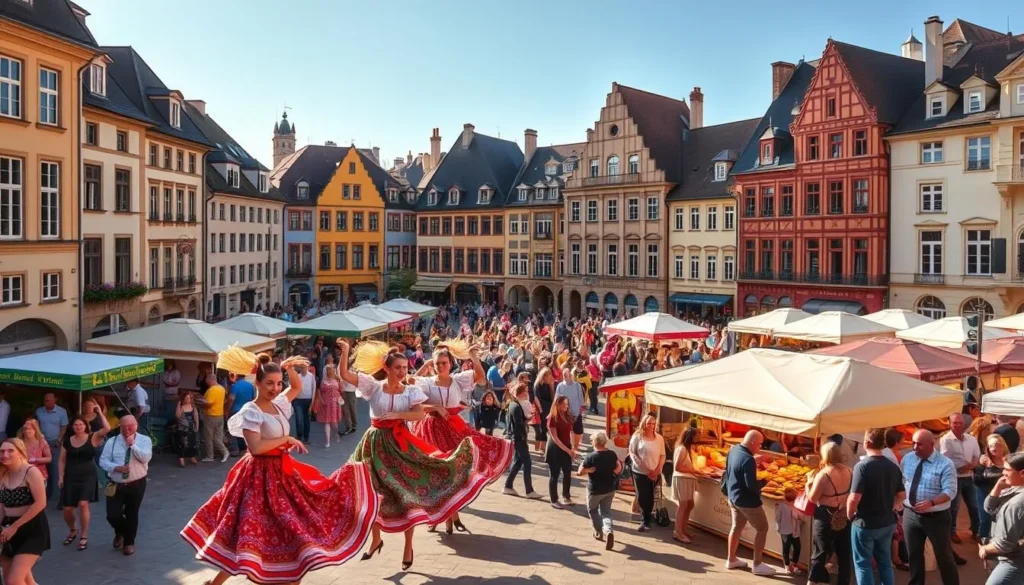
Conclusion: Making the Most of Your Luxembourg Visit
Luxembourg is a hidden gem that offers a unique blend of culture, history, and natural beauty. As you explore this compact country, you’ll discover a wealth of exciting experiences that can easily fill several days.
With its free public transportation system, you can easily travel between attractions in Luxembourg City and venture to nearby towns and castles on short day trips. Consider the time of year for your visit, as each season offers different experiences, from summer hiking and wine festivals to winter Christmas markets and cozy restaurants serving hearty Luxembourg cuisine.
To make the most of your trip, combine visits to major attractions with time to wander the streets, explore the tunnels and fortifications, and discover your own favorite views and places. Whether you’re interested in history, culture, food, or outdoor activities, Luxembourg has something for everyone, making it a surprisingly versatile destination that deserves a spot on your European travel list.
The above is subject to change.
Check back often to TRAVEL.COM for the latest travel tips and deals.
